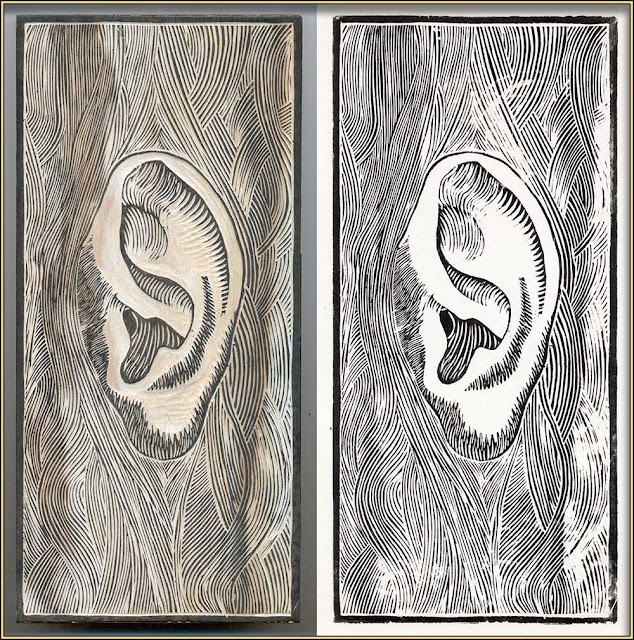I thought I would give an ordinary old scrap of 18mm pine plywood a go as a printing block. Results were mixed.
Shown here are scans of the block itself (left) and a print taken from it (right). The print has been reversed horizontally so that it matches the image on the block.
You can see dark bands running from top to bottom of the block; these are from the growth rings in the timber the plywood was made from.
The density of the wood varies quite markedly between summer and winter growth, and that causes problems when cutting from one to the other, as the gouge can unexpectedly dive deeper into the surface, or skip up out of the wood.
Also, the variable density creates variable absorbency when the ink is rolled on to the block, and it swells unevenly across its surface. The effect is miniscule, invisible to the naked eye, but you can see the results in the right-hand side of print. I was using quite a hard brayer to roll on the ink, so it was quite unforgiving of any hollows. The printing issues are exacerbated by the uneven cutting caused by the density variations too.
Apart from the issues created by the growth rings, actually cutting the pine plywood was really quite easy. It was definitely more pleasant than cutting MDF, as there was no dust, and my gouges stayed sharper for longer. For simple prints without any complex line work, I think it would probably be fine. However, for anything other than that, plywood faced with a more homogenous, fine-grained timber would be much better — cherry, for example, or pear.

No comments:
Post a Comment